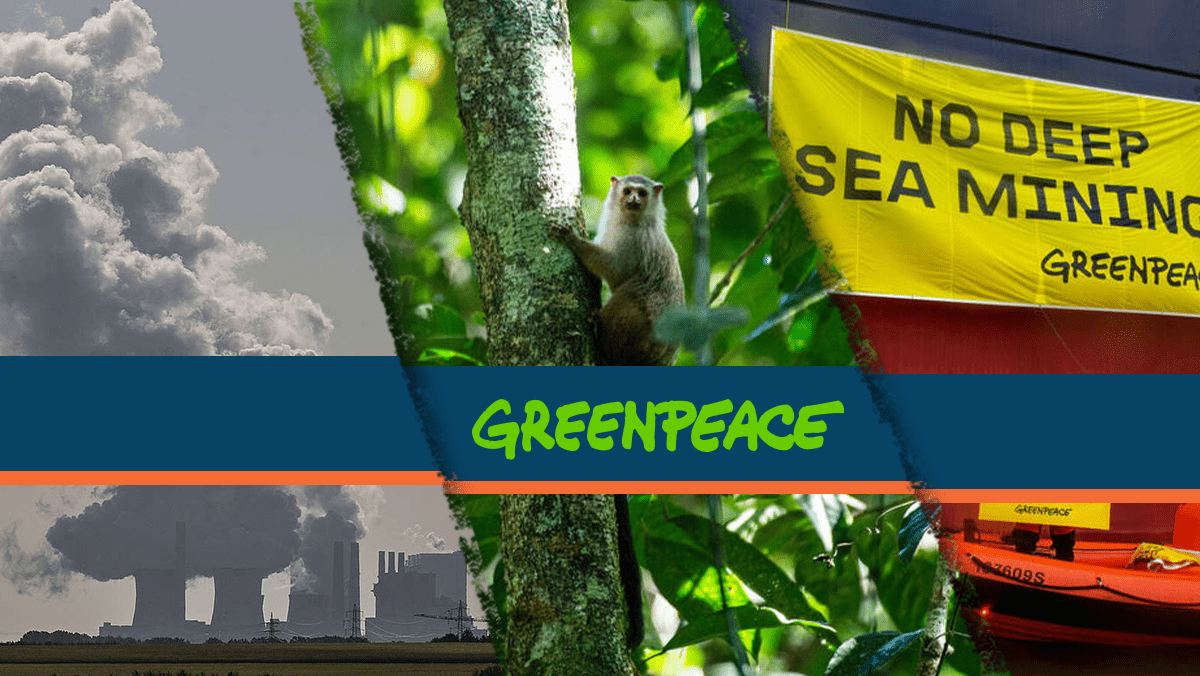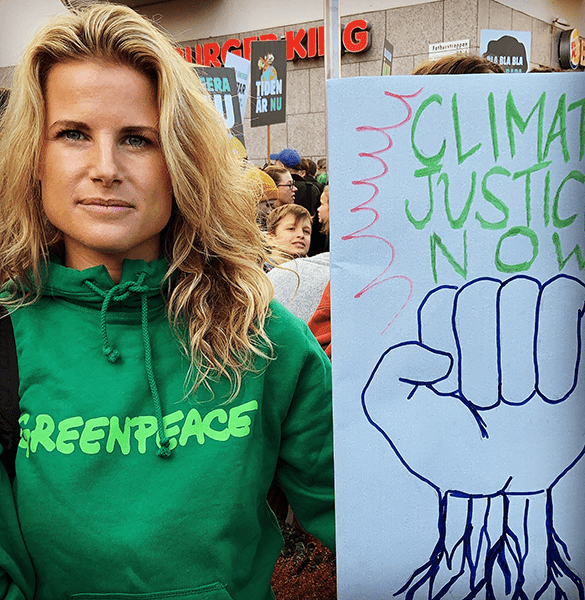

Combating Greenwashing with Programmatic Advertising
$16 CPA

Greenpeace Sweden leveraged Match2One and the power of programmatic advertising to build awareness effectively. Greenpease’s bold awareness campaign challenges the greenwashing tactics of the forestry industry with a mission of debunking misleading biofuel information. Read more about Greenpeace’s impressive display campaign results and successful collaboration with the Match2One Customer Success team.
Greenpeace is the world’s largest independent environmental organization. Since 1971, it has championed creating a fair, equal, and sustainable planet for all. As the climate crisis has intensified in recent years, Greenpeace’s mission is more critical than ever. Its efforts in Sweden include advocating for forestry reform to protect old-growth forest, and combating greenwashing with more transparent government reporting on biofuel emissions. We spoke with Felicia Lindström, Digital Engagement Strategist, about how Greenpeace Sweden uses digital marketing to educate, engage, and inspire audiences to join the fight to protect our environment.
For a nonprofit organization like Greenpeace, building and strengthening a relevant brand is key to earning the public’s support for the cause. Greenpeace Sweden has long used various digital channels to engage with current and potential supporters. Their campaigns include raising awareness around specific environmental issues, earning signatures on petitions — and driving donations.
“We operate entirely thanks to the support of our donors. We don’t accept money from political parties, governments, or companies. This means we can always hold those who commit environmental crimes accountable, because we avoid conflicts of interest. To continue operating and running our global campaigns, we depend on the support of committed private individuals and work very hard to communicate our goals and what we are working toward. Mixed in with this are our core values of nonviolence, peaceful activism, and being transparent with what we do.”
In her role as Digital Engagement Strategist, Felicia advances Greenpeace’s digital engagement and fundraising strategies. On the paid media side, Felicia says Greenpeace Sweden previously relied on ad campaigns through Facebook, Instagram, and Google. With over 125k followers on Facebook and 35k followers on Instagram, Greenpeace Sweden has an engaged organic social media presence. They’ve run some tests on TikTok, but the app doesn’t have a ton of traction in Sweden yet, so the focus has been on Facebook, Instagram, and LinkedIn for organic social.
Felicia’s role also includes uncovering and reaching out to new target groups, whether that’s on existing digital channels, or exploring new avenues. Keeping Greenpeace Sweden’s media mix diversified is a must:
“Just as we don’t have any alliances with companies or organizations, we don’t lock ourselves into one channel completely either. Within Greenpeace there are often also ethical aspects that we review to see if it is a channel that we think does not suit our organization to be on. We always try to keep our eyes open for new potential channels where we can reach out and broaden.”
While Greenpeace Sweden had previously tried out programmatic advertising, working with Match2One presented a new opportunity for the organization to expand its reach, raise awareness, and engage new supporters.
Felicia recalls that Match2One reached out to a colleague to suggest a collaboration. “When Match2One offered to do a pro bono case, we saw great value in the opportunity to use [Match2One]’s expertise to test and see if we could reach out to new target groups and engage them.”
For paid campaigns, Greenpeace Sweden had historically prioritized conversions, such as volunteering for an event, donating, or signing a petition. When first trying out programmatic advertising, the objectives were to get new monthly donors and one-time gifts. Felicia called off the test when they realized there was too much overlap with campaigns on other channels like direct mail and phone outreach.
Felicia and her team recognized another possible application for programmatic: an awareness campaign to spread the message of important educational content. Greenpeace had built a wealth of resources to educate the public about deforestation, exposing how some supposedly “sustainable” forestry practices can actually harm the environment. According to Felicia:
“One of our biggest environmental problems is our unsustainable Swedish forestry. The Swedish forestry model is marketed within the EU as a guiding light of sustainability . It is understood that it’s a climate-friendly way to cultivate forests, which is absolutely not true. So it’s something we at the Swedish office put a lot of focus on and will continue to pay attention to. While the climate crisis is escalating, there is an urgent need to challenge the myth about Swedish sustainable forestry, and the extensive greenwashing that the industry has been pushing for years.”
Compounding the damage of clear-cutting old-growth forest is misinformation about biofuels. The way data about biofuel is presented to the general public can be quite misleading as it is not communicated as emissions, but rather as changing carbon stock in soil. Because it’s an alternative to fossil fuels, biofuels are often used as “greenwashing” to both sweep the negative impacts of intense forestry under the rug as well as an alibi for fuel companies to continue selling fossil fuels.
Greenpeace decided to launch an educational campaign with two primary ambitions:
The programmatic campaign’s goal was to spread awareness, but also to drive traffic to Greenpeace’s information website and petitions. “We saw great value in going broad,” says Felicia. Having their display banners on relevant websites was very important to Greenpeace, to ensure their brand appeared in the right context. The informative ad creative would be very effective when placed in the context of a credible news site alongside related content, such as news articles about climate change. Programmatic display was ideal for casting a wide net while appearing on the best sites.
On the technical side, Felicia worked closely with Cornelia, a client success manager at Match2One, to ensure Greenpeace’s creative was optimized and reaching the right audiences. “I think we couldn’t have done this test without that support,” says Felicia.
The work of environmental organizations like Greenpeace is never done. For Felicia, Greenpeace Sweden will continue to build its brand relevance across digital channels organically, and they plan to use programmatic as part of future topic-specific awareness and engagement campaigns.

“We saw great value in going broad on the right websites”
Campaign Objectives
Geo
Sweden
Campaign Period
6 months
Devices
Desktop, Tablet, Mobile
Campaign Results
CPA
CPM
CPC
Impressions on Premium Websites
Other customer success stories